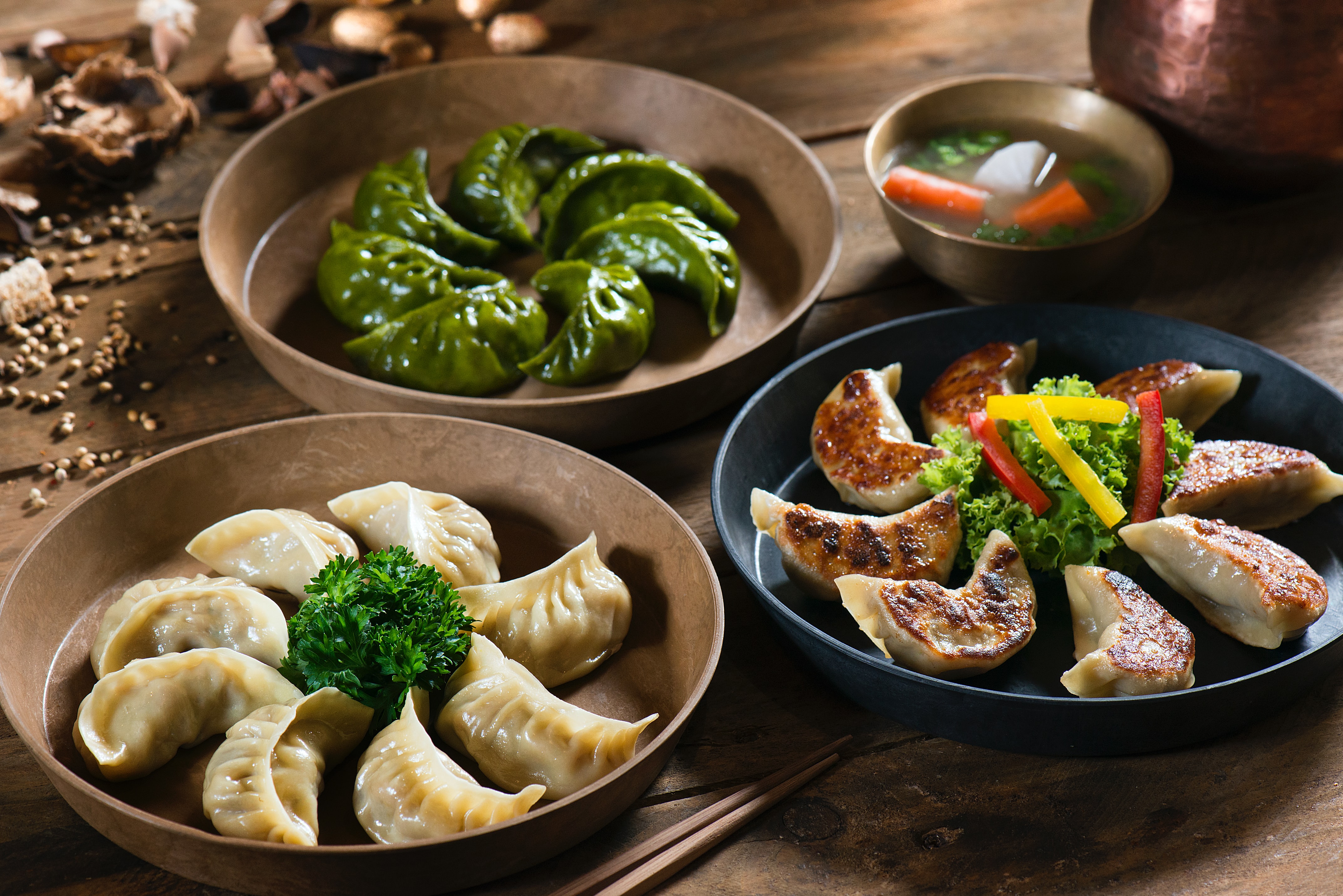Photo by Abhishek Sanwa Limbu.
Momo is a type of steamed dumpling with some form of filling. Momo has become a traditional delicacy in Nepal, Tibet, as well as among Nepalese and Tibetan communities in Bhutan, as well as people of Ladakh, Northeast India and Darjeeling regions of India.
Production
A simple white-flour-and-water dough is generally preferred to make the outer momo covering. Sometimes, a little yeast or baking soda is added to give a more doughy texture to the finished product.
Traditionally, momo is prepared with ground/minced meat filling, but in the modern era, this has changed and the fillings have become more elaborate. These days, momo is prepared with virtually any combination of ground meat, vegetables, tofu, paneer cheese, soft chhurpi (local hard cheese) and vegetable and meat combinations.
Fillings
- Meat: Different types of meat fillings are popular in different regions. In Nepal, Tibet, Darjeeling district, Sikkim and Bhutan, pork, chicken, goat meat and buffalo meat are commonly used. In the Himalayan region of Nepal, India, lamb and yak meat are more common. Minced meat is combined with any or all of the following: onions/shallots, garlic, ginger and cilantro/coriander. Some people also add finely puréed tomatoes and soy sauce.[8]
- Vegetables: Finely chopped cabbage, carrot, soy granules, potato, flat bean (Lilva Kachori) or chayote (iskush) are used as fillings in India and Nepal.
- Cheese: Usually fresh cheese (Paneer) or the traditional soft chhurpi is used. This variety is common in India and Eastern Nepal.
- Khoa: Momo filled with milk solids mixed with sugar are popular as dessert in the Kathmandu valley.
Process
The dough is rolled into small circular flat pieces. The filling is then enclosed in the circular dough cover either in a round pocket or in a half-moon or crescent shape. People prefer meat that has a lot of fat because it produces flavorful juicy momos. A little oil is sometimes added to the lean ground/minced meat to keep the filling moist and juicy. The dumplings are then cooked by steaming over a soup (either a stock based on bones or vegetables) in a momo-making utensil called mucktoo. The dumplings may also be pan-fried or deep-fried after being steamed.
Varieties
There are typically two types of momo, steamed and fried. Momo is usually served with a dipping sauce (locally called chutney/achhar), normally made with tomato as the base ingredient. Soup momo is a dish with steamed momo immersed in a meat or vegetable broth. Pan-fried momo is also known as kothey momo. Steamed momo served in hot sauce is called C-momo. There are also a variety of dumplings of Nepal found in the Indian state of Sikkim and Darjeeling district, including tingmo and thaipo.
.png)
